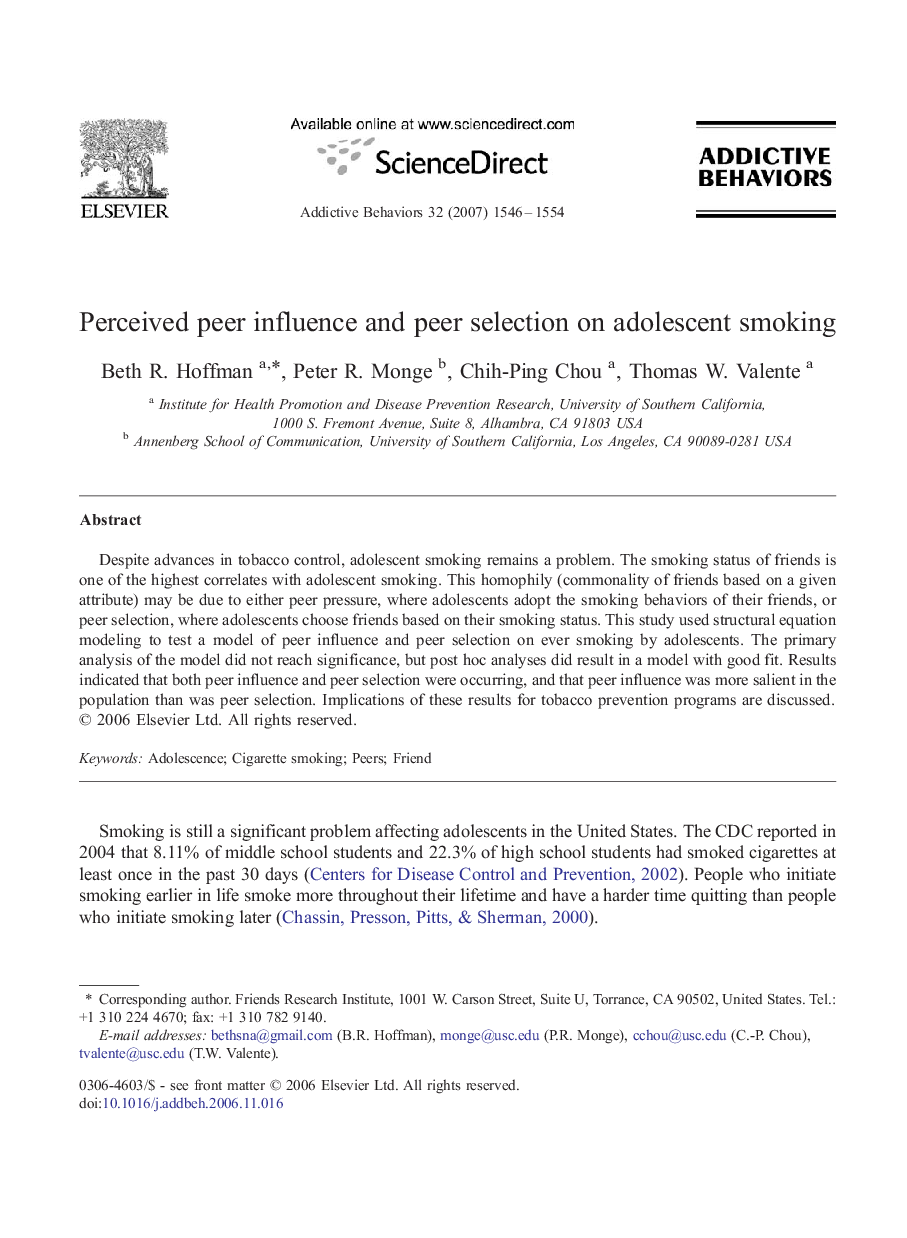| Article ID | Journal | Published Year | Pages | File Type |
|---|---|---|---|---|
| 900572 | Addictive Behaviors | 2007 | 9 Pages |
Despite advances in tobacco control, adolescent smoking remains a problem. The smoking status of friends is one of the highest correlates with adolescent smoking. This homophily (commonality of friends based on a given attribute) may be due to either peer pressure, where adolescents adopt the smoking behaviors of their friends, or peer selection, where adolescents choose friends based on their smoking status. This study used structural equation modeling to test a model of peer influence and peer selection on ever smoking by adolescents. The primary analysis of the model did not reach significance, but post hoc analyses did result in a model with good fit. Results indicated that both peer influence and peer selection were occurring, and that peer influence was more salient in the population than was peer selection. Implications of these results for tobacco prevention programs are discussed.
